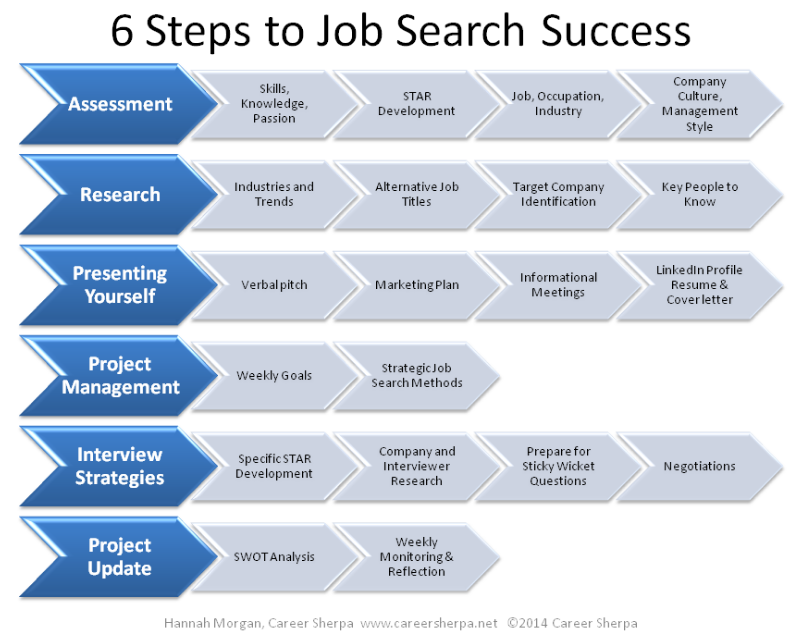The third step of Hannah Morgan’s six step job search strategy is Presenting Yourself. This is the last of the “sharpen your saw” steps, and is critical as you prepare to get in front of people. This is where you take what we’ve done in the first two steps and you create some very specific, very targeted, very aligned marketing material… your personal marketing material.
I have been going to job clubs for over ten years. I’ve met with hundreds, thousands of job seekers. I’ve done tons of LinkedIn Profile critiques and have heard more 30 second pitches than you could imagine. Rarely do I hear or see personal marketing material that is pretty good. Please spend time on this step so you are not as cliche and poorly presented as most job seekers. I want you to do a better job of presenting yourself!
Verbal Pitch: When you first meet someone, what do you say? How do you present yourself? I’ve heard plenty of “pitches” and many… most… need help. They are cute but have no message. They are clever, but too jargony. They are without meat and have no “what’s next.”
In this step (presenting yourself) you should work on a 30 second elevator pitch that is flexible depending on the audience, a response to “tell me about yourself” in a networking group or an interview, and then what comes after that, in case someone says “Oh? Tell me more…” What are you going to say when you call someone on the phone, and they answer? Or, if you get to their voicemail? You can script and practice these, which isn’t to say that you are supposed to talk about a robot or not be able to think on your toes.
Marketing Plan: Classes are dedicated at universities on marketing plans, and usually have the 4 P’s (Price, Promotion, Place, Product). That might be a good start for you, but study “marketing plans” to see what else you should define in your plan. I suggest you don’t spend too much time here… I like planning and stuff, but you could really spend weeks and weeks understanding marketing plans and them applying what you learn to your own plan.
Your marketing plan might be as simple as “Do these things daily, do those things weekly, spend an hour on follow-up each Monday, Wednesday, and Friday,” etc. Schedule things out, and then honor the schedule.
Informational Meetings: These have traditionally been called Informational Interviews… and are one of the most powerful proactive job search tactics that you could ever do. If I had to start my job search today, after learning about job search stuff for the last eleven years, I would spend 90% of my time working on informational interviews. That is, finding people, having the meetings, asking for introductions, having more meetings, etc.
There is definitely an art to these… it’s not a chew the fat meeting. They are very, very purposeful. I created a Pluralsight course on Informational Interviews, and the topic comes up in most of the insider interviews I’ve done. What I really want you to take away is this: 90% of my time! A key to an effective informational interview strategy is presenting yourself well at every stage of this strategy.
LinkedIn Profile, Resume, and Cover Letter: Isn’t it amazing that if you are doing each of these things sequentially, you don’t get to the resume or LinkedIn Profile until the 12th step? Seriously… not jumping into the resume or Profile means that by the time we get there, we have a very good idea of why and how we’ll use them, with who, and what the messaging should be. Presenting yourself in those mediums will be easier once you’ve gone through this process.
Presenting Yourself Effectively
The result of presenting yourself effectively is that you’ll have real marketing material to share. We are ready when we meet someone at a networking event… we know what message we should share, and the words to use. We have confidence that the written marketing material we have prepared, from our business card to our email signature to the resume to our LinkedIn Profile, are on-brand and communicating the right messages.
Your messaging isn’t going to distract from the real message, your brand, or decrease your chances of getting closer to having the right conversation with the right people.
How are you feeling by this point? You feel focused, empowered, and READY!


1 thought on “Job Search Strategy: Presenting Yourself Successfully (3)”
Comments are closed.